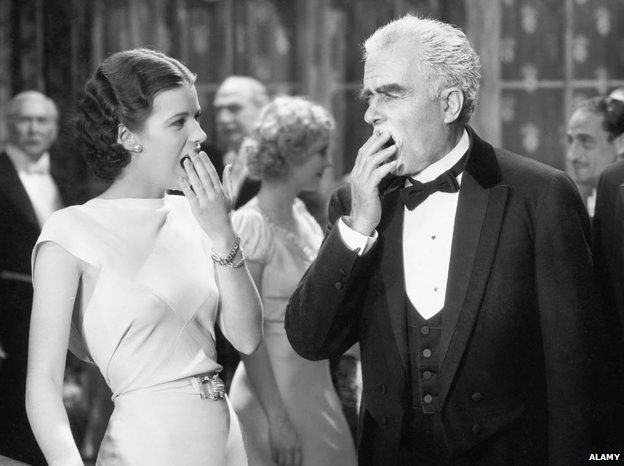What is Human Mimicry?

Human mimicry refers to the unconscious adoption of posture, gestures and facial expressions of others during social interaction. This change in behaviour has been dubbed the “Chameleon effect”.
Mimicry is an automatic and prolific aspect of social interaction, however we do not engage in mimicry with everyone all the time. It has been identified that when we perceive a person’s characteristics as positive and want to feel closer to them we engage in more mimicking behaviour. Conversely when we negatively characterize or are otherwise avoiding a personal connection we typically avoid mimicry. For example, a study found an avoidance of mimicry when a confederate had a visible scar or was obese . As mimicking behaviour is influenced by positive or negative perceptions of social categories it follows that we are more likely to mimic those whom we share social categories with. This has been observed in relation to people’s ethnicity and religious affiliation .
Mimicry is not only influential in terms of the behaviour of the mimicker but also can have powerful effects on the person being mimicked. Mimicked individuals are more likely to be helpful and generous towards others and are more likely to feel positive towards the person who mimicked them. As we are more likely to mimic those we want to build a connection with, mimicking behaviour has the social benefit of eliciting reciprocal feelings and prosocial behaviours in others. This may be particularly relevant to social interactions that occur in a commercial setting. Those who were intentionally mimicked were more generous in negotiations, tipped their waitresses more and spent more on cosmetics .
While experiencing mimicry behaviour is largely associated with feelings of happiness and comfort there can be negative consequences to mimicry in certain contexts. There is evidence that when mimicking occurs between people who are in different social groups (i.e. contexts in which mimicry does not typically take place) performance on a cognitive test diminished .
Originally written - February 2016
SOURCES
a b c d Chartrand, T. L., & Bargh, J. A. (1999). The chameleon effect: The perception–behaviour link and social interaction. Journal of personality and social psychology, 76(6), 893. Johnston, L. (2002). Behavioural mimicry and stigmatization. Social Cognition, 20, 18–35. a Van Baaren, R. B., Janssen, L., Chartrand, T. L., & Dijksterhuis, A. (2009). Where is the love? The social aspects of mimicry. Philosophical Transactions of the Royal Society of London B: Biological Sciences,364(1528), 2381-2389. Greenwald, A., McGhee, D., Schwartz, E. (1998). Measuring individual differences in implicit cognition: the Implicit Association Test. Journal of personality and social psychology. 74, 1464–1480. Johnston, Y., Miles, L., Peace, L. (2006). Implicit behavioural mimicry: investigating the impact of group membership. J. Nonverbal Behav. 30, 97–113. Van Baaren, R. B., Holland, R. W., Kawakami, K., & Van Knippenberg, A. (2004). Mimicry and prosocial behaviour. Psychological science, 15(1), 71-74. Maddux, W. W., Mullen, E., & Galinsky, A. D. (2008). Chameleons bake bigger pies and take bigger pieces: Strategic behavioural mimicry facilitates negotiation outcomes. Journal of Experimental Social Psychology, 44(2), 461-468. Van Baaren, R. B., Holland, R. W., Steenaert, B., & van Knippenberg, A. (2003). Mimicry for money: Behavioural consequences of imitation. Journal of Experimental Social Psychology, 39(4), 393-398. Kulesza, W., Szypowska, Z., Jarman, M. S., & Dolinski, D. (2014). Attractive Chameleons Sell: The Mimicry‐Attractiveness Link. Psychology & Marketing, 31(7), 549-561. Andersen, P & Guerrero, L (1997) Handbook of Communication and Emotion: Research, Theory, Applications, and Contexts. San Diego; Academic Press. Dalton, A. N., Chartrand, T. L., & Finkel, E. J. (2010). The schema-driven chameleon: how mimicry affects executive and self-regulatory resources.Journal of personality and social psychology, 98(4), 605.

